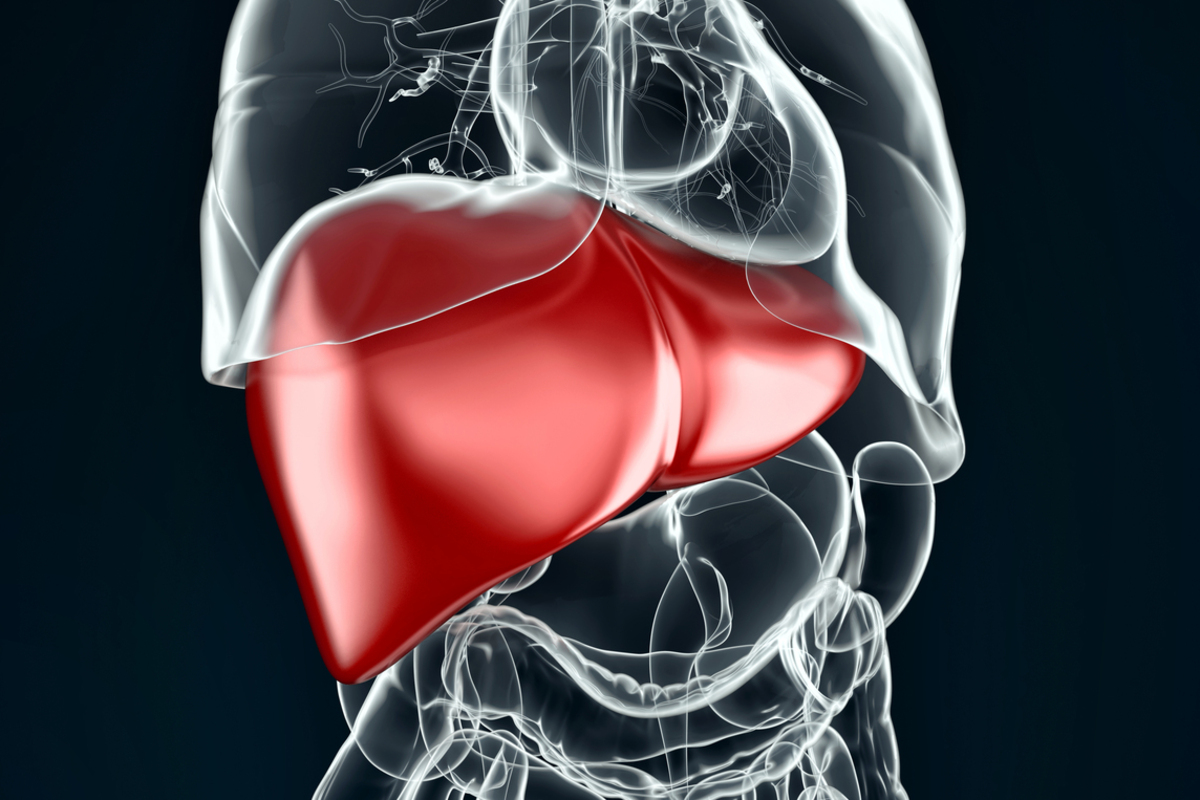Every stage of illness and recovery from anorexia, bulimia, and binge-eating disorder poses perils for liver health.

Both anorexia and the recovery from anorexia are perilous for liver health
The recovery from anorexia also presents challenges to liver health, although these problems are less severe. The liver normally stores up to a pound (about 450-500 grams) of glucose in the form of glycogen. A small amount of excess carbohydrate from each meal is stored as glycogen that can be broken down into glucose and water and released into the bloodstream in times of stress. When people who have anorexia are recovering from starvation, their livers don’t yet have the glycogen reserves needed for releasing sugar for exercise. Hypoglycemia becomes a problem when exercise is resumed too quickly.
At the same time, anorexia patients who are still excessively thin are at risk for fatty liver disease. This condition occurs when triglycerides aren’t removed from the liver for use elsewhere in the body. Recovering anorectics have multiple needs for protein building all over their bodies and may not be able to make the apolipoprotein needed to remove triglycerides from the liver.
Anorectics who have chronic liver infections can have simultaneous problems with eating too much and not eating enough. One of the ways liver cells repair themselves after viral infection is a process called autophagy. The cell “eats” its own defective proteins and enzymes so they can be replaced. This process does not start until there has been a 12- to 24-hour period without food consumption. As little as 5 grams of protein consumption interrupts autophagy for the whole body. Anorectics who eat tiny amounts of food interrupt the autophagy needed for liver cell repair but fail to get the nutrients needed for liver function.
Purging can lead to liver disease in people who live with bulimia nervosa
People who have bulimia fall into a pattern of consuming calories and trying to purge them before they can cause weight gain. Some bulimics induce vomiting. Some bulimics engage in excessive exercise. And some bulimics try to get rid of calories with diuretics and laxatives.
One potential complication of long-term of laxatives is a condition known as laxative jaundice. The muscles that line the bowel become insensitive to stimulant laxatives, so it’s necessary to use more and more every day just to avoid constipation. The chemical byproducts of ever-increasing doses of stimulant laxatives have to be broken down by the liver.
Liver disease and uncontrolled diabetes are a deadly combination for binge eaters
Pre-existing liver disease and uncontrolled diabetes can cause neurological complications for people who live with binge-eating disorder. A case history might run something like this.
Sam had lived with both alcoholism and binge-eating disorder his entire adult life. He had been sober for six months, but giving up alcohol caused him to crave sweets. One night he ate two coconut cream pies and washed them down with two liters of Coca-Cola. The next morning Sam couldn’t walk. He was dizzy even when he was lying down. At the emergency room, his blood sugar level was 29.1 mmol/l (523.8 mg/dl).
When the neurologists examined Sam, they found that he was suffering demyelinization, a kind of stripping of “insulation,” of the neurons in the center of his brain. The combination of long-term liver disease and severely high blood sugar levels was causing damage to neurons. Fortunately, over the next month in hospital, the doctors were able to stabilize Sam so that he could return home. However, he had to begin insulin therapy for his type 2 diabetes.
Fatty liver disease is common and reversible in binge eaters.
Up to 85 percent of people who live with a binge-eating disorder develop some degree of non-alcoholic hepatitis steatosis, or fatty liver disease. The condition does not usually cause symptoms, and is reversible as regular eating habits are resumed.
- Papadopoulos F, Ekbom A, Brandt L, Ekselius L. Excess mortality causes of death and prognostic factors in anorexia nervosa. Br J Psychiatry. 2009.194:10–17.
- Rosen E, Bakshi N, Watters A, Rosen HR, Mehler PS. Hepatic Complications of Anorexia Nervosa. Dig Dis Sci. 2017 Nov. 62(11):2977-2981. doi: 10.1007/s10620-017-4766-9. Epub 2017 Sep 20. Review. PMID: 28932925.
- Smink F, van Hoeken D, Hoek H. Epidemiology, course, and outcome of eating disorder. Curr Opin Psychiatry. 2013.26:543–548.
- Photo courtesy of SteadyHealth


Your thoughts on this